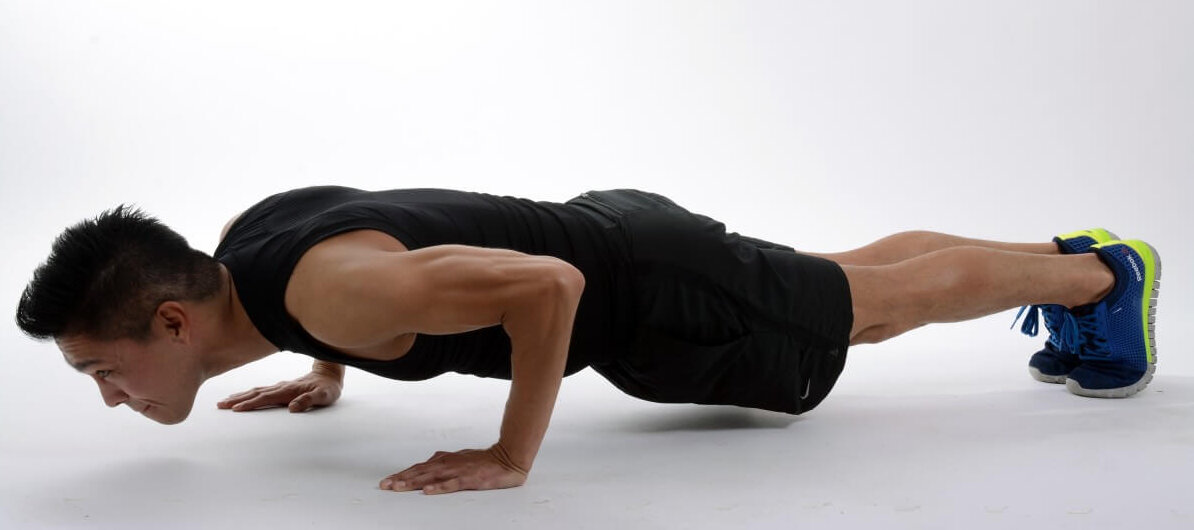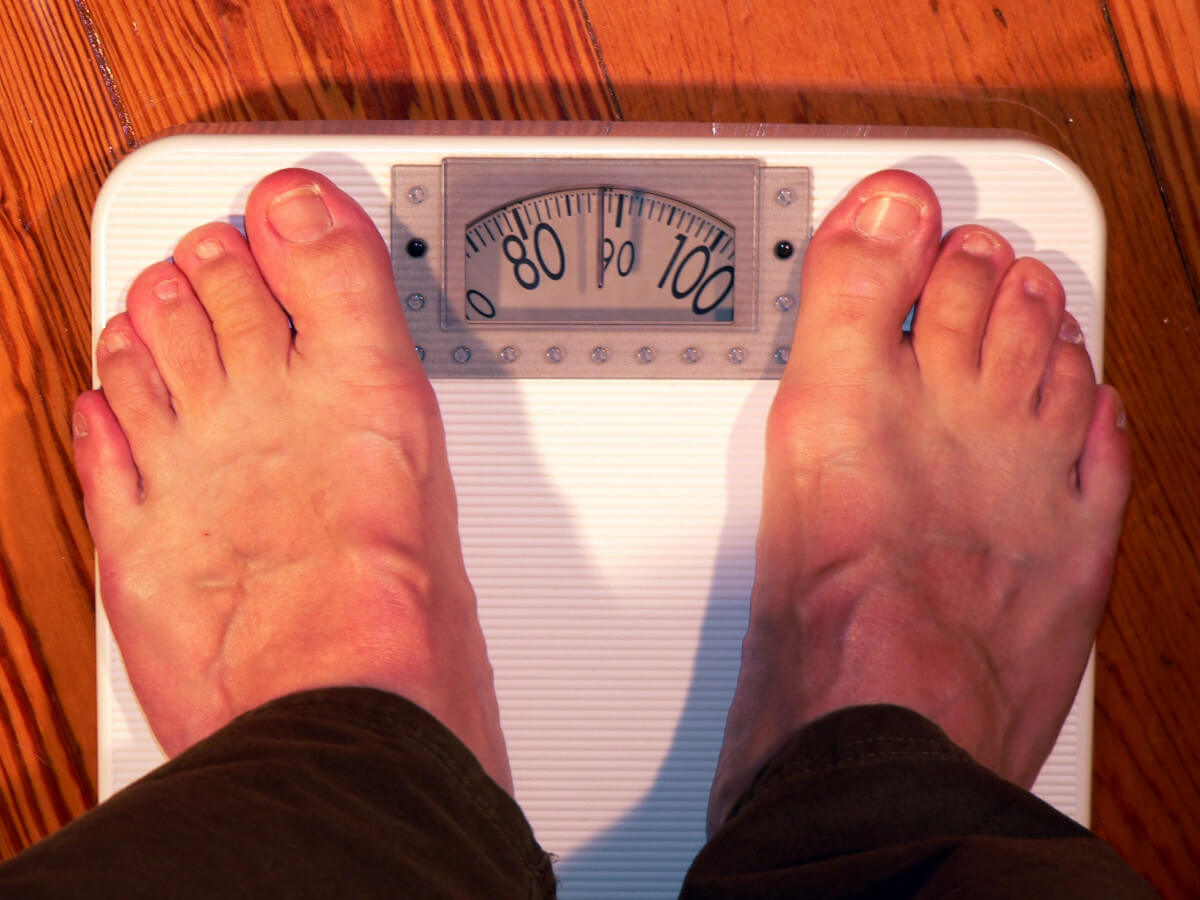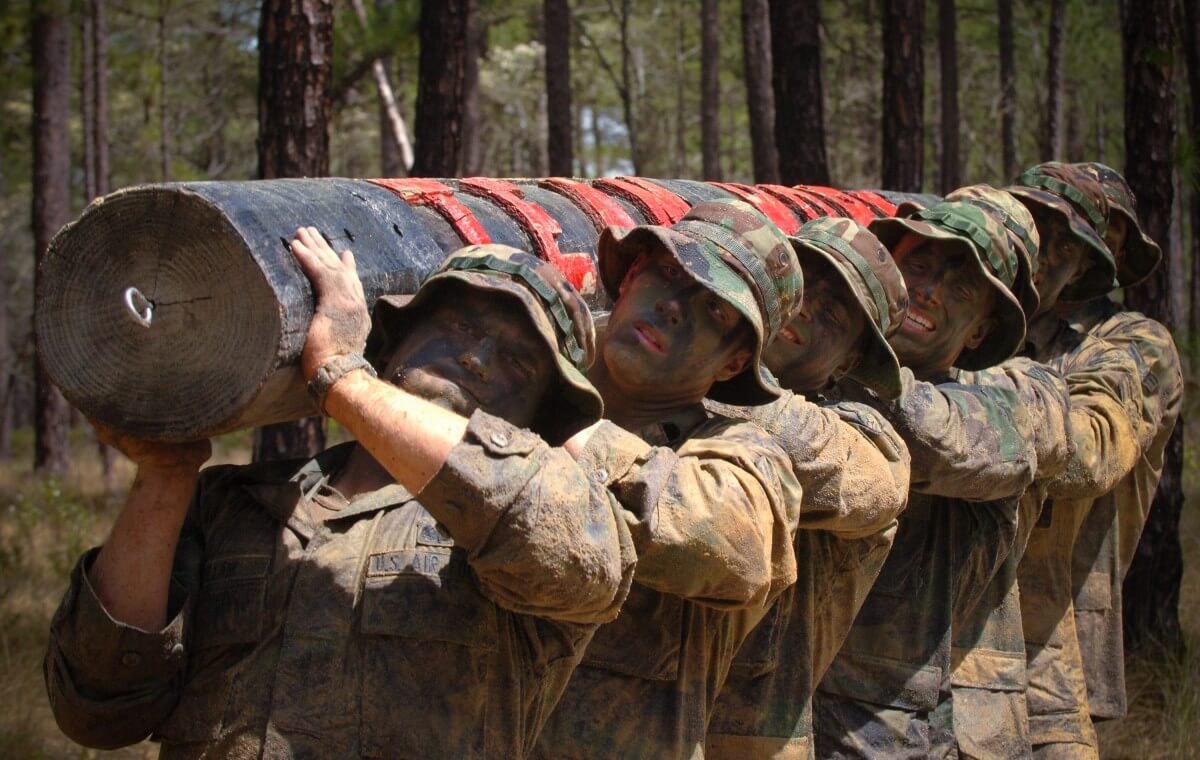
As a longtime physical educator, I know and value the importance of quality physical education to our children’s well-being. I am also a military veteran raised by two veteran parents and have two siblings who also served in the military. Needless to say, like physical education, I also value the military and how it protects its citizens from threats and supports peace and stability worldwide. Naturally, both professions are tied to the common goal of high levels of quality physical fitness. Unfortunately, both professions are currently struggling to meet this goal, and the consequence of this continuing failure puts nations at risk.

Fitness in our Schools
The necessity to improve physical fitness and overall health in school-aged children in the United States has received considerable attention ever since the Kraus-Weber Test was national news in 1953 for revealing American children’s poor fitness scores when it came to postural muscles and flexibility (Kraus & Hirschland, 1953). President Eisenhower established the President’s Council on Youth Fitness in 1956 in response to the test results with the goal of promoting youth fitness (Esmonde & Jette, 2021). Regardless of the continuous efforts of the President’s Council on Youth Fitness over the past 80 years, youth physical activity levels have struggled.
The 2018 United States (U.S.) Report Card on Physical Activity for Children and Youth reported that only 24% of U.S. children and youth ages 6 to 17 meet the guideline of 60 minutes of physical activity every day and that there was a significant drop in physical activity levels with increasing age (Katzmarzyk et al., 2018). The report gave an overall physical activity grade of D- and a grade of D regarding sedentary behaviors (Katzmarzyk et al., 2018). Diminished development of motor competence across childhood is partly a result of the regression in physical fitness and general physical activity levels in youth (Robinson et al., 2015; Stodden et al., 2008).

Childhood obesity in the United States is among the highest in the world (Fryar et al., 2020, Hales et al., 2017). Data also suggests that increases in the prevalence of obesity among primary school children paused in the early 2000s (Ogden et al., 2016). However, recent studies report that obesity among children and adolescents has continued to rise (Ogden et al., 2020). In addition, about 40 percent of today’s high school students and young adults could be categorized as overweight or have experienced obesity before leaving primary school (Hales et al., 2017). Since 2010, many public health efforts have been directed toward reducing childhood obesity, such as the Let’s Move! campaign and the Healthy, Hunger-Free Kids Act. Sadly, these policies have not influenced reducing population-level obesity (Kenney et al., 2020). However, in 2007, the National Football League (NFL) launched the “Play 60” campaign to fight childhood obesity, which has shown some promise by increasing physical activity and establishing healthy diets (Bai et al., 2017).
Fitness in our Military
Physical Military Readiness (PMR) is the “ability to meet the physical demands of any combat or duty position and accomplish the mission” (Headquarters, Department of the Army, 2018) and is a severe issue for the United States Army. Between 27% and 31% of Americans aged 17-24 are automatically disqualified from Army service because they are overweight (Boivin et al., 2016). Furthermore, 47% of men and 59% of women fail their preliminary Army Physical Fitness Test (APFT) when they enter Basic Combat Training (BCT) (Misson Readiness, 2010). The APFT, which BCT trainees need to pass to graduate, consists of two minutes of maximum repetition sit-ups, two minutes of maximum repetition push-ups, and a two-mile run for time (Headquarters, Department of the Army, 2018). Unfortunately, only 2 in 5 young adults are weight-eligible and physically prepared for basic training. Recruits who are not fit are less likely to complete basic training because of injuries than physically prepared candidates (CDC, 2023). In 2022, researchers found that less than half of the military-aged U.S. population were qualified to enter the military based on their BMI, and only 1 in 3 met BMI eligibility and were sufficiently physically active (Webber et al., 2022).

The military readiness issue is, in part, due to the decline in physical fitness and activity across childhood and adolescence in the United States (CDC, 2011), and the time between high school and military enlistment is short. The average age of high school graduates is 18, while the average age of military enlisted admissions is 19.3 years, ranging from 18.5 for the Marine Corps to 19.7 for the Army, which shows a short transition time between school and military enlistment (U.S. Department of Defense, 2017).
Making the Connection
The common goal of high levels of quality physical fitness for both physical education and the military is clearly at risk, and the consequences of ignoring this issue could jeopardize national security. The issue of military fitness is not new and can be dated back to the Spartans and World War I and II. Fitness was a high priority for the Spartans, and the basis of their military strategy was to mandate physical conditioning and toughness as a benefit for combat effectiveness (Barrow, 1983). However, one-third of those drafted for World War I were deemed unfit for combat (Walton-Fisette & Wuest, 2018), and fitness levels were also a concern during World War II. “Many young men are entering the Army today totally unprepared for military life. It takes weeks to bring them into the physical conditioning necessary for military training” (High School Victory Corps, 1943). In 1941, less than half of high school men participated in a regular physical education/fitness program (Headquarters, Department of the Army, 2018). More recently, the Society of Health and Physical Educators (SHAPE) America recommends that high school students spend an average of 45 minutes/day or 225 minutes/week in physical education (SHAPE America, 2015). However, only about 30% of high school students nationwide report attending physical education classes daily during an average 5-day school week, and only 51.7% report attending physical education on ≥1 day in an average school week (Kann et al., 2017).

The clear connection between low fitness levels in high school students and military recruits, as well as a lack of physical education in schools, should be a clear motivation for politicians, educators, and military leaders to embrace and advocate more quality physical education with the goal of not only supporting healthy outcomes for our students but the military strength of the country. Sun Tzu (2010) 500 BC, may have said it best, “The more you sweat in peace, the less you bleed in war.
References
Barrow, H. M. (1983). Man and movement: principles of physical education. 3rd ed. Philadelphia, Lea & Febiger.
Boivin, M. R., Kwon, P. O., Cowan, D. N., Packnett, E. R., Elmasry, H., Feng, X., & Walter Reed Army Institute of Research Silver Spring United States. (2016). Accession medical standards analysis and research activity (AMSARA), 2015 Annual Report.
Centers of Disease Control and Prevention (2011). School health guidelines to promote healthy eating and physical activity. MMWR. Recommendations and reports: Morbidity and mortality weekly report. Recommendations and reports, 60(RR-5), 1–76.
Centers of Disease Control. Physical activity and military readiness. Retrieved May 15, 2023, from https://www.cdc.gov/physicalactivity/resources/physical-activity-military- readiness.html
Esmonde, K., & Jette, S. (2021). ‘We are not a nation of softies, but we could become one’: Exploring the Materiality of Fitness Testing in the President’s Council on Youth Fitness. Somatechnics, 11(3), 395-412.
Fryar, C. D., Caroll, M.D., & Afful, J. (2020) Prevalence of overweight, obesity, and severe obesity among children and adolescents aged 2–19 years: United States, 1963–1965 through 2017–2018. NCHS Health E-Stats.
Hales C., Carroll M., Fryar C., & Ogden C. (2017). Prevalence of obesity among adults and youth: United States, 2015–2016. NCHS Data Brief. (288):1–8.
Headquarters, Department of the Army. (2018). FM 7-22 Army physical readiness training. Lulu Com.
High School Victory Corps, Hearings before the Committee on Education and Labor, United States Senate on S.875 (Washington: Government Printing Office, 14 April 1943), 37 (testimony of Colonel Theodore Bank).
Kann, L., McManus, T., Harris, W. A., Shanklin, S. L., Flint, K. H., Queen, B., Lowry, R.,
Chyen, D., Whittle, L., Thornton, J., Lim, C., Bradford, D., Yamakawa, Y., Leon, M., Brener, N., & Ethier, K. A. (2018). Youth risk behavior surveillance – United States, 2017. Morbidity and mortality weekly report. Surveillance summaries (Washington, D.C. : 2002), 67(8), 1–114. https://doi.org/10.15585/mmwr.ss6708a1
Katzmarzyk, P. T., Denstel, K. D., Beals, K., Carlson, J., Crouter, S. E., McKenzie, T. L., & Wright, C. (2018). Results from the United States 2018 report card on physical activity for children and youth. Journal of Physical Activity and Health, 15(s2), S422-S424.
Kraus, H., & Hirschland, R. P. (1953). Muscular fitness and health. Journal of Physical Education, Recreation & Dance, 24(10), 17-19.
Kenney, E., Barrett, J., Bleich, S., Ward, Z., Cradock, A., & Gortmaker, S. (2020). Impact Of The Healthy, Hunger-Free Kids Act On Obesity Trends: Study examines the impact of the Healthy, Hunger-Free Kids Act of 2010 on childhood obesity trends. Health Affairs, 39(7), 1122-1129.
Mission Readiness. (2010, August, 8). Military Leaders for Kids. Too Fat to Fight: Retired Military Leaders Want Junk Food Out of America’s Schools. https://strongnation.s3.amazonaws.com/documents/24/ec1aefe5-f170-4f75-ade5-0e8063430f16.pdf?1469638848&inline;%20filename=%22Too%20Fat%20to%20Fight.pdf%22
National Physical Activity Plan Alliance. US National Physical Activity Plan. Retrieved May 3, 2023, from http://physicalactivityplan.org/docs/2016NPAP Finalforwebsite.pdf.
Ogden, C., Carroll, M., Lawman, H., Fryar, C., Kruszon-Moran, D., Kit, B., & Flegal, K. (2016). Trends in obesity prevalence among children and adolescents in the United States, 1988-1994 through 2013-2014. Journal of the American Medical Association, 315(21), 2292-2299.
Ogden, C., Fryar, C., Martin, C., Freedman, D., Carroll, M., Gu, Q., & Hales, C. (2020). Trends in obesity prevalence by race and Hispanic origin—1999-2000 to 2017-2018. Journal of the American Medical Association, 324(12), 1208-1210.
Robinson, L. E., Stodden, D. F., Barnett, L. M., Lopes, V. P., Logan, S. W., Rodrigues, L. P., & D’Hondt, E. (2015). Motor competence and its effect on positive developmental trajectories of health. Sports Medicine, 45(9), 1273-1284.
SHAPE America – Society of Health and Physical Educators. (2015). The essential components of physical education. Reston, VA: Author, 11.
Stodden, D., Goodway, J., Langendorfer, S., Roberton, M., Rudisill, M., Garcia, C., & Garcia, L. (2008). A developmental perspective on the role of motor skill competence in physical activity: An emergent relationship. Quest, 60(2), 290-306.
Tzu, S. (2010). The art of war. Capstone Publishing.
Bai, Y., Saint-Maurice, P., Welk, G., Russell, D., Allums-Featherston, K., & Candelaria, N. (2017). The Longitudinal Impact of NFL PLAY 60 Programming on Youth Aerobic Capacity and BMI. American Journal of Preventive Medicine, 52(3), 311–323.
U.S. Department of Defense (DoD). 2017 Demographics: Profile of the Military Community. Washington, DC: 2017. Retrieved from
http://download.military onesource.mil/12038/MOS/Reports/2017-demographics- report.pdf.
Walton-Fisette, J. L. & Wuest, D. A. (2018). Foundations of physical education, exercise science, and sport (19th ed.). New York: McGraw-Hill.
Webber, B., Bornstein, D., Deuster, P., O’Connor, F., Park, S., Rose, K., & Whitfield, (2023). BMI and Physical activity, military-aged US population 2015–2020. American Journal of Preventive Medicine, 64(1), 66-75.
